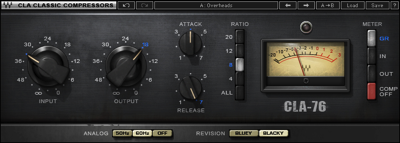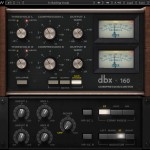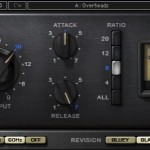
Compressed Exploration – Part 2
In my last article I talked about a technique for understanding how a compressor works. Today I have a second technique I’ll just call the Difference Technique. Just to reiterate, I didn’t come up with these techniques, but I don’t remember where I learned them so my apologies to the original creator.
This technique will require audio of your favorite instrument, a compressor, a couple of channels/inputs, and the ability to flip the polarity of a channel/input/etc.
I like this technique for a couple reasons. For starters, you usually don’t need much special gear to try it. Secondly, it can be used to explore a lot of audio processors and not just compression. As I mentioned last time, this might be easier to do in a DAW. If you’re using any sort of digital workstation or console to try this, just make sure it can do delay compensation for any processing latency.
To set this up you need to import your audio of choice into your DAW and duplicate it so you have two identical versions of it. Make sure both versions are perfectly identical, and then flip the polarity of one version. I do this with a Trim plug-in when working in Pro Tools, but you could also do it with the polarity button on a console. You can check to make sure everything is working so far by playing back your audio; you should hear absolute silence if you set things up properly. Muting one of the channels should allow you to hear your original sound.
Next, insert a compressor on only one of the versions of your sound. Bypass the compressor and do another check to make sure you hear nothing. Turn the compressor back on and start playing with the controls.
So what does this do?
Since we have two versions of the same thing that are out of polarity with each other, they will perfectly cancel everything that’s identical. As soon as we start changing the audio on one of these channels, we will hear only the difference between those two channels. In the case of using a compressor, this can help us hear the artifacts the compressor adds.
Now, a quick note on this. It’s important to use the right amount of makeup gain so the proper amount of phase cancellation is happening between the two channels. If one channel is louder than the other, the content that’s the same won’t completely cancel out, and you’ll hear some of the original audio. This can be a little finicky to get right when using a compressor for this technique so I usually just adjust the makeup gain to get the most cancellation. Keep in mind as the compressor acts on one of the channels, it is attenuating that channel which in turn undoes the phase cancellation and reveals the uncompressed channel in the process. What we’re listening for, though, are the artifacts of the compressor.
So let’s listen to this in action on a snare drum. Here is our snare drum from the last post; keep in mind there has been no EQ put on this–it’s the raw snare. The compressor used here was the Waves dbx 160 doing about 5 dB of gain reduction at a 4:1 ratio with 5 dB of makeup gain.
Snare (original): [audio:/comp/sn-cln.mp3]
Snare (compressed): [audio:/comp/sn-dbx160.mp3]
Now, here’s what happens when we use the difference technique:
[audio:/comp/sn-dbx160-polarity.mp3]In this example, I don’t think I quite got the makeup gain on the compressor set quite right because there’s still a fair amount of ambience when the comp isn’t working. However, I think this still helps illustrate this technique because you can hear the distortion the compressor is imparting on the drum along with the signature “knock” of the 160.
Now let’s check out another compressor on the snare. Here’s the Waves CLA-76 doing about 5 dB of gain reduction with a 4:1 ratio. Attack was probably set about straight up, and release was as fast as it can go.
[audio:/comp/sn-1176-5db.mp3]Now here’s what happens when I use the difference technique:
[audio:/comp/sn-1176-polarity.mp3]Hopefully you can hear this gives the snare an entirely different thing than the dbx 160. To me it doesn’t have the hard edge of the 160.
The great thing about both of these compressors is neither of them are wrong. They’re just different. The CLA-76 has been my go-to compressor on snare drums for many years, but these days I prefer the 160 for most things. You might prefer one over the other or a different compressor altogether.
The point of this exercise is simply to get a better understanding of what our processing is actually doing to the audio because it’s not always what we assume. I think it also highlights that different makes of the same type of processor aren’t all going to do the same thing. Sometimes these differences are small details, but it’s the details that often make the difference in things.
As I mentioned earlier you can use this technique with more than just compressors. EQ’s are a fun one to try, but it can be used with just about any other type of audio processing you can think of. The advantage you might get from this is when you’re familiar with what these things add, it can be easier to hear them within context to decide if something is working or not.
Give this a try if you’re curious about what your gear is doing, and let me know what you find out.


 Previous Post
Previous Post Next Post
Next Post


